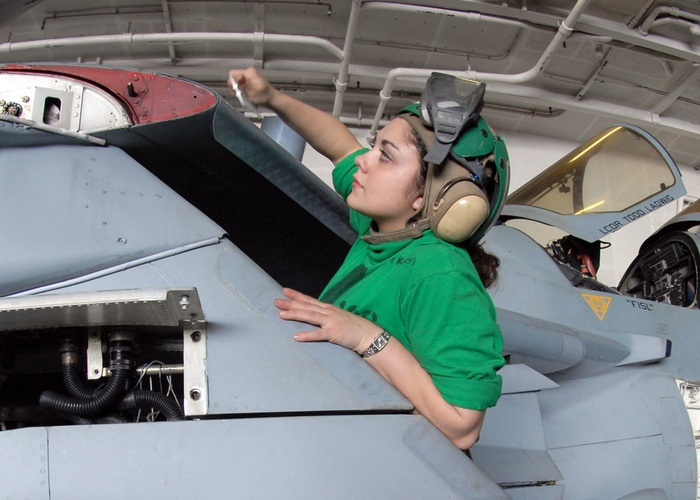Whether an old airframe is on the edge of retirement or a brand-new jet, a robust logistics chain, and parts supply are paramount.
Greenwood Aerospace is your leader in government procurement, aircraft and parts storage and distribution, and military and defense contracting. Our expertise and services include the following:
Procurement of
- Fixed-wing aircraft and associated support
- Aircraft parts & accessories
- Military aircraft parts
- Storage and distribution of parts and supplies to your organization. We will operate as your private warehouse and distribution network.
This is only a sample of our services and capabilities.
Learn more about our services for the defense and military industries. For additional information, you can also contact us here or by emailing sales@governmentprocurement.com.
The U.S. Army is best known for its robust fleet of helicopters. Helicopters are and always have been the cornerstone of Army aviation, so most people think of Army aviation as a rotary-wing-specific entity. However, the Army also maintains a fairly large fleet of fixed-wing aircraft. Most are “slicks” used for DV, priority passenger transport, or light cargo movements. But the Army has also used fixed-wing assets for intelligence, surveillance, and reconnaissance (ISR) work for decades. The Guardrail program is the original Army ISR program, and RC-12X Guardrail is still the backbone of the Army ISR mission. But it is getting old and quite long in the tooth. In fact, the Army relies on scavenging parts from decommissioned aircraft in the boneyard to keep the remaining aircraft in the fleet operational. As the fleet of RC-12X Guardrail aircraft ages, the Army ISR mission, which is different from that of the other branches, is only becoming more demanding. A new asset is needed and is on the horizon.
RC-12X Guardrail: Past Its Prime
The latest iteration of the Guardrail aircraft is the RC-12X. It is one in a very long line of ISR aircraft, all stemming from the original RC-12D. But the Guardrail program stretches back to the early 1970s when the Army used the King Air 90-series U-21. These unpressurized versions of the King Air were primitive by today’s standards, but turbine-powered aircraft were still far ahead of previous models, which were piston-powered designs.

However, the RU-21 aircraft was pushed out of the main line of ISR work nearly as soon as the Army adopted the C-12 Huron as its primary fixed-wing asset in the 1970s. The Guardrail program evolved with the pressurized RC-12, which allowed it to fly higher, and a higher fuel load and more powerful engines gave it more loiter time. At the time, the King Air 200 was state-of-the-art and was far more efficient than jets of the age, which gave it much more endurance than a jet. But as decades came and went, the King Air became a less ideal platform for ISR work. Jets became much more efficient, and the advantages are clear. A modern business-class jet, in this case, the Challenger 650, cruises roughly 20,000 feet higher than a turboprop. We learned how imperative this was in Afghanistan, especially with the E-11A Battlefield Airborne Communications Node (BACN), which orbited for hours at a time around FL450 to clear the mountain ranges.
Army ISR Enters The Jet Age
After nearly five decades of continuous service, the Army is at a turning point with their ISR assets. The King Air 200 RC-12 Guardrail has performed admirably but is no longer the ideal platform for the mission, especially with the need for parts availability for critical systems. Another problem with using the C-12 as a base-model aircraft for ISR work is ferrying the aircraft. Crossing the globe in a C-12 or RC-12 can take 5-7 days, assuming no maintenance issues exist. A Challenger 650 can do it in a day or two. When you need ISR support, you need it now, not later. The solution is obvious: a jet must replace the Guardrail program, which is overdue for sunset.
Using the Bombardier Challenger 650 As A Base Platform
There are a few jets that are being successfully used as ISR platforms by militaries around the world. Israel uses the Gulfstream G550 as an ISR platform. Of course, the BACN, which is a Global 6000, has been successfully used for the “WiFi in the sky” mission by the U.S. Air Force for well over a decade, almost all of which has been in-theater. Advances in technology allow the much smaller Global 6000 to replace the E-8 JSTARS, a remarkable feat considering the JSTARS has a crew of up to 19 and will be replaced by a commercial off-the-shelf business-class jet with a crew of two pilots.

The main advantages of using a commercial off-the-shelf business jet are multifold:
- Strong logistical support
- Excellent parts availability
- Commercially available aircrew training
- Commercial contract maintenance
A high cost is incurred by operating tactical aircraft with no civilian derivatives, namely that uniform personnel must handle all maintenance in-house. There is great expense and time involved in training a cadre of maintenance technicians, especially for an airframe with such a small fleet. Also, establishing supply chains for individual aircraft is extremely costly, as is building a supply of parts. Instead, Greenwood Aerospace can develop the supply chain for any of the commercially used aircraft being used as ISR platforms, including the ARTEMIS platform. We can also warehouse parts for your operation, keeping your operation light on its feet.
Aerial Reconnaissance and Targeting Exploitation Multi-Mission Intelligence System = ARTEMIS
The ARTEMIS is not a one-for-one swap with the Guardrail program. Instead, it represents advances in technology that will render the Guardrail obsolete. One of the great advantages of ARTEMIS is the modularity of the platform. All of the critical equipment is in rack-mounted equipment stations. But if the ARTEMIS is needed to move personnel, it can all be removed quickly, and seating for up to 16 passengers can be installed. As I mentioned earlier, the Army ISR mission is not the same as the Air Force ISR mission; the nomenclature may be similar, but the bones of the project are not. The Air Force tends to focus on non-kinetic effects for the battlespace.

However, the Army is not as interested in non-kinetic effects. The Army is a kinetic military branch, so its intelligence apparatus acts accordingly. The purpose of ARTEMIS is sensing for Army fires and joint fires. In other words, sensing and targeting for artillery and rocket batteries. That added altitude is a game changer, too, especially when fires need to operate over or across mountain ranges. An extra 20,000 feet is a lot of added visibility. The other great advantage of ARTEMIS goes back to modularity. If the Army needs to change the mission, the seasons in the aircraft are easily mixed and matched by removing and replacing a sensor pack in the aircraft. Changing the mission profile could take only a few hours instead of using a completely different aircraft. This is an incredible feature and will serve to keep costs much lower by using a common aircraft that can perform multiple missions. Also, the Challenger 650 has proven to be an extremely reliable platform, providing mission capability rates exceeding 90% during the ARTEMIS deployments to the Pacific theater.
Altitude + Loiter Time + Range: Winning Combination
The ultimate knockout of the ARTEMIS over the guardrail is a combination of ingredients. It can loiter longer, fly much higher and faster, and has far improved range. Add to that the modularity of the payloads, which can be rapidly swapped out as missions change, and then the ability to discard the sensors entirely to move passengers instead make it an incredible battlefield asset. Using a wildly popular commercial off-the-shelf jet is a great move. It has a robust supply chain with parts that are easy to procure. Also, all maintenance is contract, keeping the footprint very light and swift for the ARTEMIS.
Parting Thoughts
Greenwood Aerospace is proud to support the DoD; we have been doing it for many years. As the Army transitions away from the RC-12 Guardrail program and adopts ARTEMIS as its ISR platform of choice, Greenwood Aerospace will be there to secure critical parts. We will warehouse them to ensure the ARTEMIS team can focus on making the mission happen instead of their supply chain. You can worry about the ISR mission; we’ll handle parts and services.


.svg)


.png)


